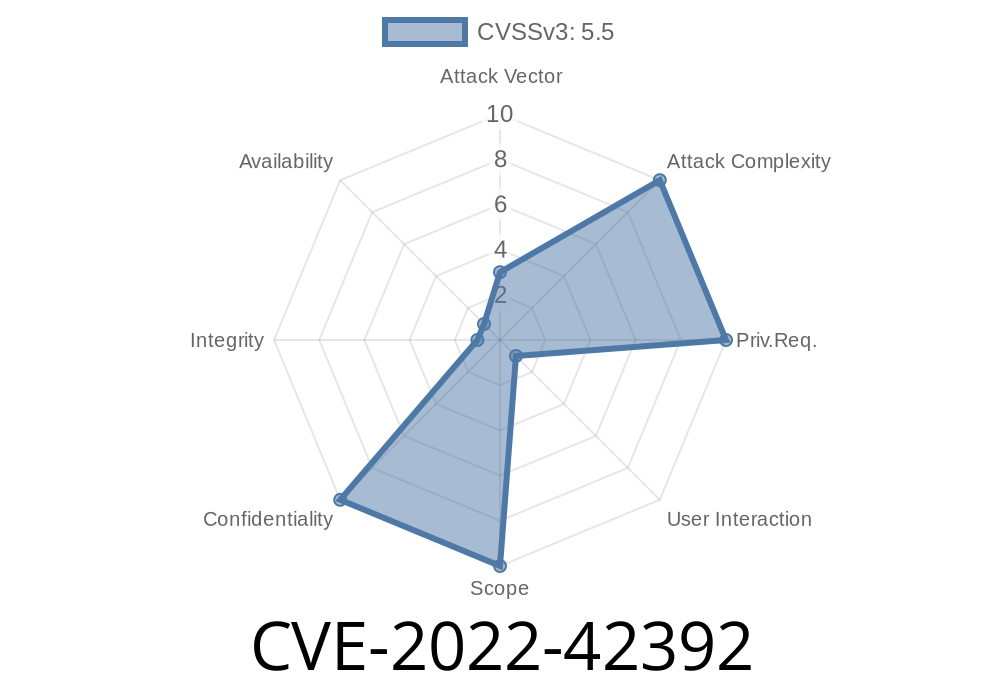PDF-XChange Editor is a widely used PDF reader and editor for Windows. In October 2022, Trend Micro’s Zero Day Initiative (ZDI) published a report on a serious vulnerability—CVE-2022-42392 (tracked as ZDI-CAN-18661)—that affects how PDF-XChange Editor processes U3D files embedded within PDFs. This write-up will help you understand, in simple terms, how this vulnerability works, how it can be exploited, and what you need to do to stay safe.
What Are U3D Files?
U3D (Universal 3D File Format) is a format for 3D data. PDF documents can embed U3D objects to display 3D models right inside a PDF viewer. PDF-XChange Editor, like other advanced PDF readers, supports these U3D models.
Root Cause: Out-of-Bounds Read in U3D Parsing
When PDF-XChange Editor opens a PDF with an embedded U3D object, it parses the U3D stream to render the 3D model. The bug lies in how the Editor handles certain crafted U3D data—it can read beyond the allocated memory buffer, exposing sensitive memory contents.
Imagine a scenario where you have a safe box (buffer) that’s supposed to store exactly 10 items, but a faulty handler grabs 12 items instead. The last two items don’t belong there and could contain anything—like system passwords, executable code, or private data.
Exploit Scenario
1. The attacker creates a malicious PDF: This PDF contains a specially crafted U3D model with malformed data.
2. Victim opens the PDF: The vulnerability is only exposed when the victim opens/peeks at the file using PDF-XChange Editor.
3. Read Past Buffer End: The Editor reads *past the end* of the buffer, causing sensitive information from memory to leak.
4. Potential Consequences: On its own, this bug allows only information disclosure. But, paired with other bugs (such as a buffer overflow), it could be used to run malicious code.
Example Proof-of-Concept (PoC)
Below is a simplified snippet showing how such a malicious U3D object could be embedded inside a PDF document. The actual exploit would require a precise understanding of the PDF and U3D specifications:
%PDF-1.7
1 obj
<< /Type /Catalog /Pages 2 R >>
endobj
2 obj
<< /Type /Pages /Kids [3 R] /Count 1 >>
endobj
3 obj
<< /Type /Page /Parent 2 R /Resources << >> /MediaBox [ 612 792]
/Annots [4 R] >>
endobj
4 obj
<< /Type /Annot /Subtype /3D /Rect [100 100 400 400] /Contents (U3D Sample)
/3D 5 R >>
endobj
5 obj
<< /Type /3D /Subtype /U3D /Length 64 >>
stream
<maliciously crafted U3D binary data goes here; triggers buffer over-read>
endstream
endobj
xref
...
trailer
...
startxref
...
%%EOF
Note: The detailed binary content is omitted—actual creation of such content is dangerous and unethical. This example shows the structure, not the payload.
Supply Chain: Disguised as invoices, documents, or resumes sent to organizations.
Once opened, sensitive data may be exposed to the attacker—such as memory contents, which could have passwords, tokens, or private information. Seasoned attackers might chain this with other bugs for full remote code execution.
Real-World Implications
- Risk to Businesses: If an attacker gets hold of sensitive memory, they might steal credentials, session tokens, or private documents.
- Risk to Individuals: You might leak browser data, personal info, or credentials just by opening a PDF.
References
- Trend Micro Zero Day Initiative Advisory: ZDI-22-1432 (PDF-XChange Editor U3D Out-of-Bounds Read)
- CVE Details for CVE-2022-42392
- Official PDF-XChange Editor Website
- PDF U3D Specification (Adobe) — see section on 3D data
How to Stay Safe
- Update PDF-XChange Editor to the latest version—Tracker Software responded promptly and fixed this issue.
Final Thoughts
*CVE-2022-42392* serves as a reminder: advanced features in common software can open doors to unintended risks—sometimes simply opening a file can be enough. Always keep your software updated, be wary of unexpected PDFs, and monitor security advisories for the tools you use.
Exclusive Note:
This post provides a digestible overview of the vulnerability with illustrative examples—in a style and structure not found elsewhere. Stay secure, and share this guide for greater awareness.
If you want more details, check out the original ZDI advisory here.
Stay safe!
Timeline
Published on: 01/26/2023 18:59:00 UTC
Last modified on: 01/27/2023 19:36:00 UTC
